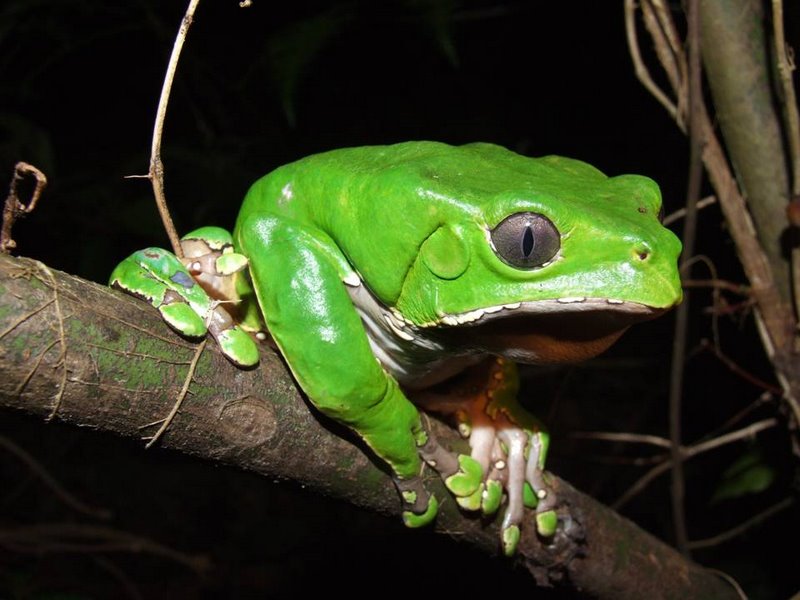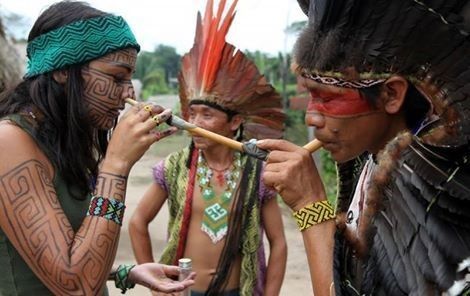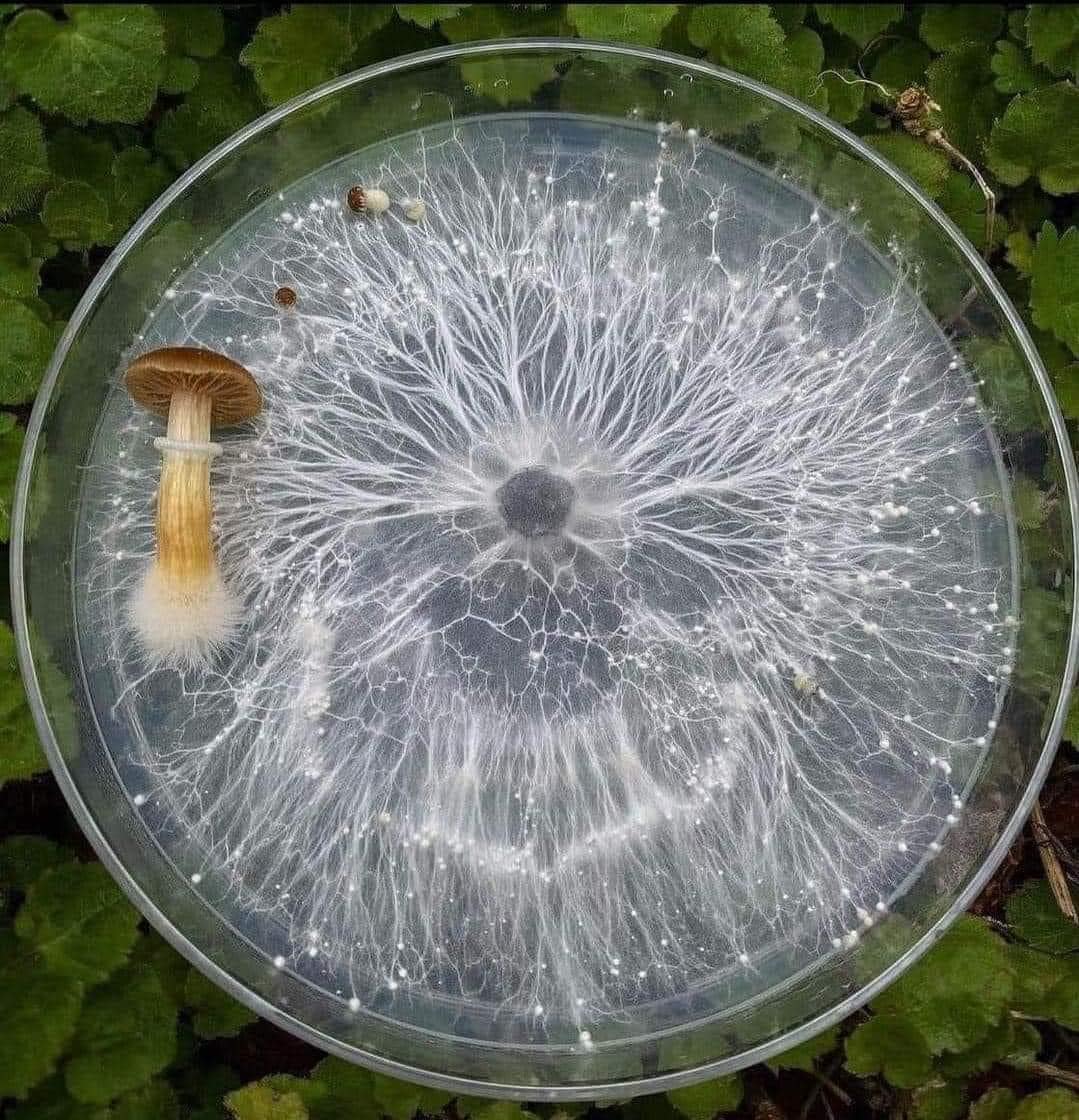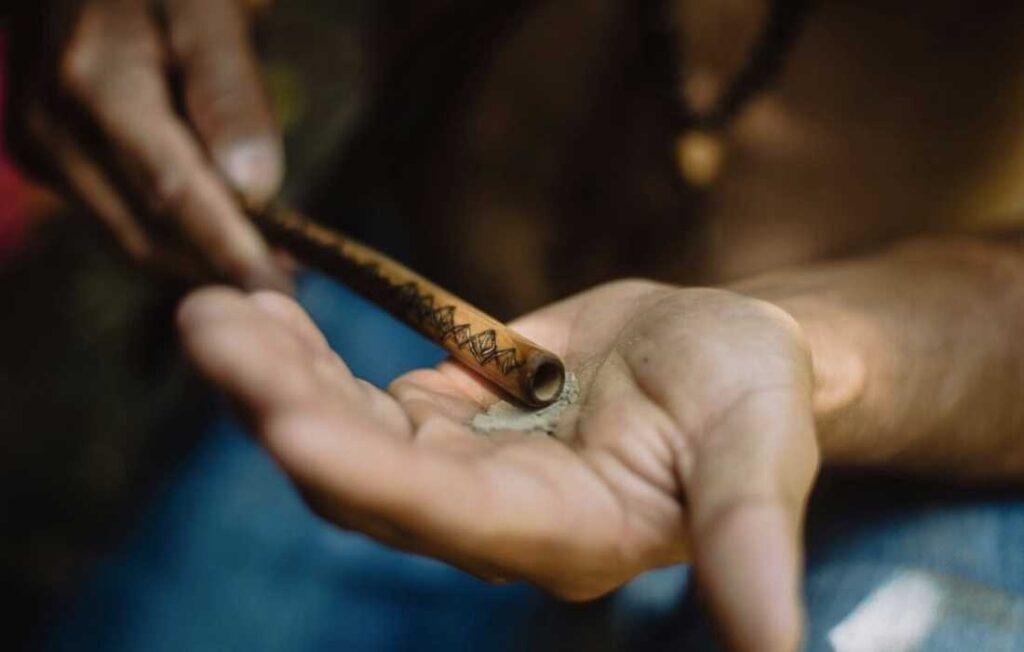
What is Amazonian Rapé?
Rapé or Rapeh, Hapé is a very sacred shamanic medicine produced by the indigenous tribes of South America, primarily in Brazil and Peru. Rapeh or Rapé, Hapé, Hapeh is pronounced "haa-pay or hapé" in English. Hape' indigenous medicine is rarely available and very sacred to South American tribes. It is used to connect deeply with spirits, animals and Mother Nature. Rapé is a cleansing and healing medicine.
In 1577, herbal snuff was introduced to Europe by the physician and botanist Francisco Hernández de Boncalo. During that era, the European elite often used snuff as a remedy for headaches. In the 18th century, inhaling snuff became fashionable among the European aristocracy.
The hapé has been used by the healers of the Amazon Basin for thousands of years and has become an essential part of their tribal culture and history. The indigenous tribes pass it down to us with this message: the use of Rapé should always be associated with prayer or ritual and received or given with respect and humility. It will help a lot if a clear intention is attached with which we enter the ritual and we keep it in mind the whole time. The effects and realization of the intention will thus be strengthened.
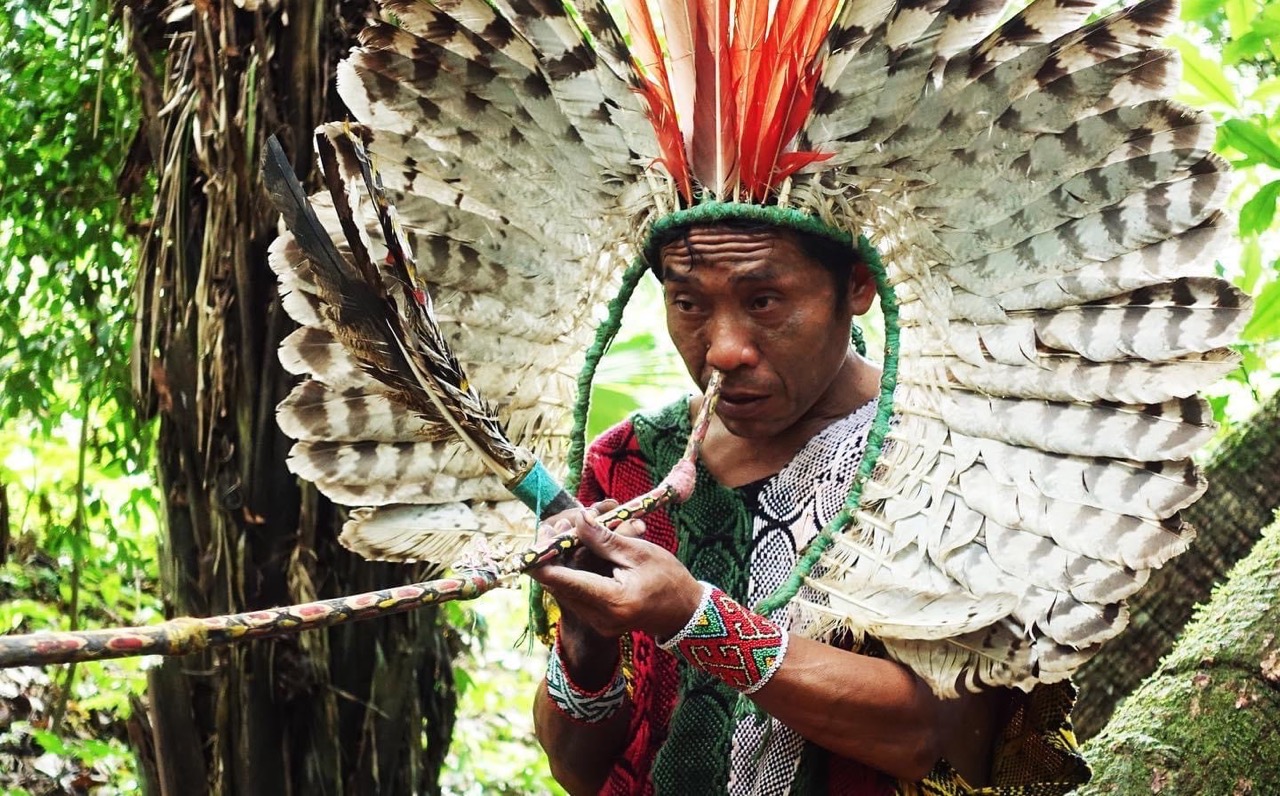
Production of Rapé
The production of this sacred medicine takes several days and is very laborious. Rapé is made in a ceremonial way from various Amazonian medicinal plants (Maestra plantas), Mapach, wood and bark from trees, leaves or seeds from the Amazon rainforest. The individual components are ground into a fine powder in a long, demanding process in mortars and pestles, while sacred songs and prayers are sung. Finally, the powder is sifted through very fine sieves to the desired fineness. It is quite an alchemy to make a quality and strong Rapé because it takes a lot of skill and this information and learning is passed down for centuries. The exact recipe is known to tribal shamans and selected individuals from the tribe. The highest quality Rapé is produced in Brazil, where the Huni Kuin (Kaxinawa), Yawanawá, Nukini, Kuntanawa, Katukina, Puyanawa, Caboclo, Shawadawa and Apuriña tribes are known. Rapé production also exists in Peru, Colombia and Ecuador.
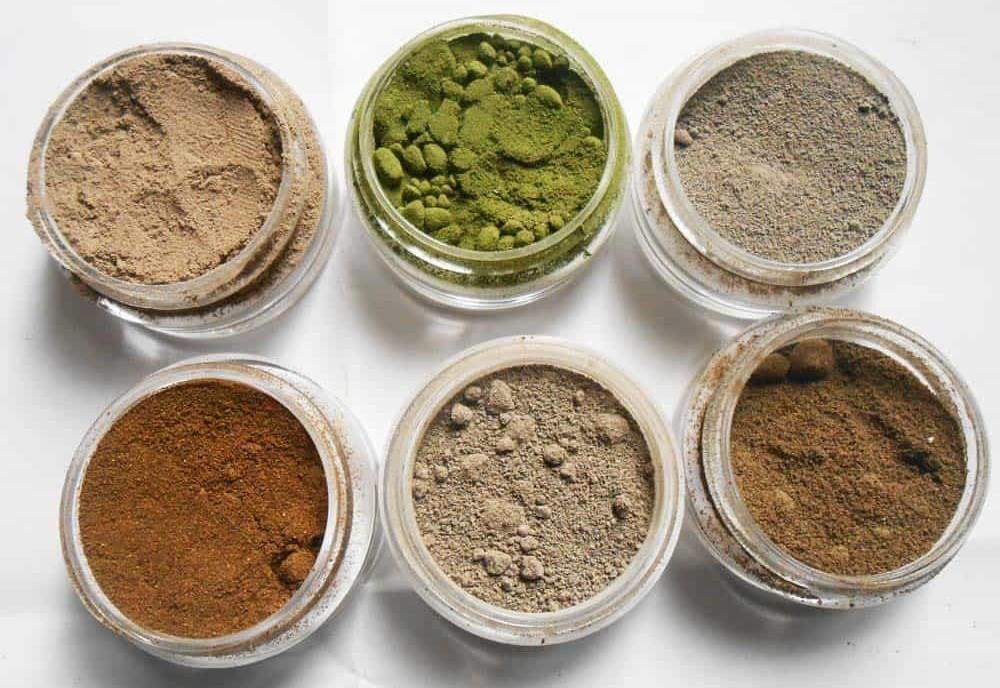
Effects of Rapé
Rapé can help us harmonize, activate and open our body's chakra energy system, ground ourselves, release ailments on a physical, emotional, mental and spiritual level. It can help us open the third eye, decalcify the pineal gland, remove mental confusion, release all negative thoughts. It also has the power to remove entities, connect with your breath and tap into Spirit. It calls upon the spirits to assist those who come to this medicine for deep healing and connection with the creator source.
Please note that you may experience purging, vomiting and excess saliva, which is normal - and a good sign that you are clearing stuck energy, toxins and disease from your energy and physical body.
Each type of Rapé has slightly different properties, even if they are similar, it is quite subjective, which suits whom. Individual types can have different vibrations, subtleties and different effects on the energy field.
In the same way, shamans use Rapé to reconnect with their energy channels, with their higher self and to intensify their connection with the forest, Pachamama or the universe. In addition, Rapé paves the way to detoxify the body and remove all excess mucus, toxins and bacteria, helping to fight disease. In addition, Rapé stimulates the mind with its nicotine content, which in turn releases a.o. epinephrine, acetylcholine and dopamine, which promote increased attention, presence and intuition.
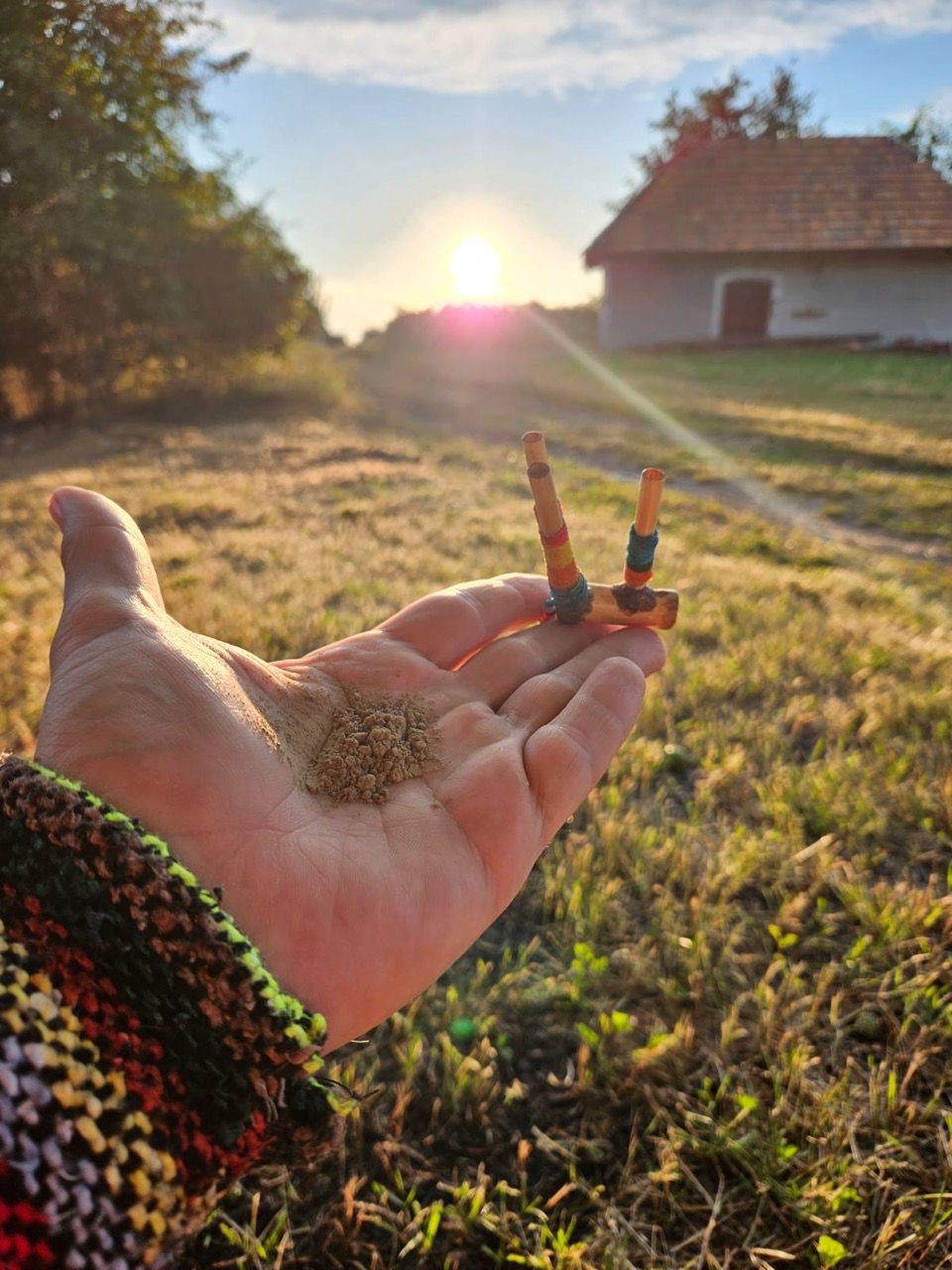
How to use Rapé
Traditionally, this medicine is applied using a blowtorch, which can be made of wood, bamboo, bone, or stone. It can be applied separately using a V-shaped self-applying blowtorch, known as "Kuripe", which connects the person's mouth to the nose. Rapé can also be administered by one person to another, using a large blowpipe called a Tepi, which connects one person's mouth to the other's nose. It is best to try the right way of enjoyment with an experienced person, either through Kuripé or Tepí, and later also on your own.
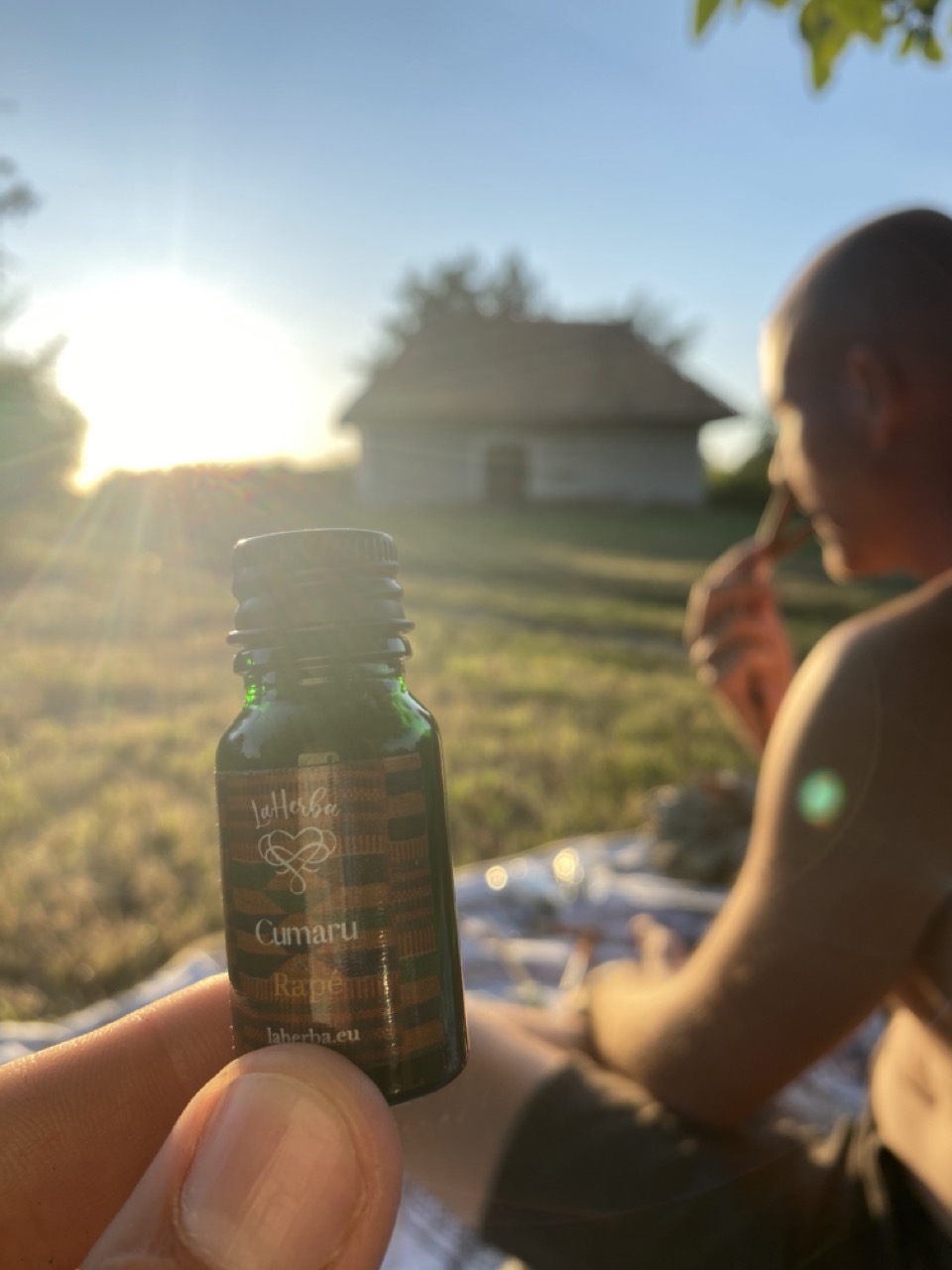
Personal experiences and recommendations for using Rapé
To begin with, it is advisable to start with a smaller amount (about the size of a pea) in each nostril. The amount can be increased after use, as soon as one gets more used to working with this medicine and builds a relationship with the spirit of the plant and the specific Hapé. It is important to set aside enough time, at least 20-30 minutes, to create a nice, pleasant environment, real well-being, or best to go to nature or a nice place. At the beginning, we can light a candle, a scented candle and smoke with Palo Santo or sage. Meditation music, mantras, or we can gently sing to ourselves. The posture is best in Turkish sitting or on the knees, for those who find sitting with crossed legs uncomfortable. Giving thanks and expressing your intention seems to us to be the most important part of the ritual, so we give it the appropriate time and attention with an open heart. Then we just observe and feel. Practice makes perfect applies here as well.
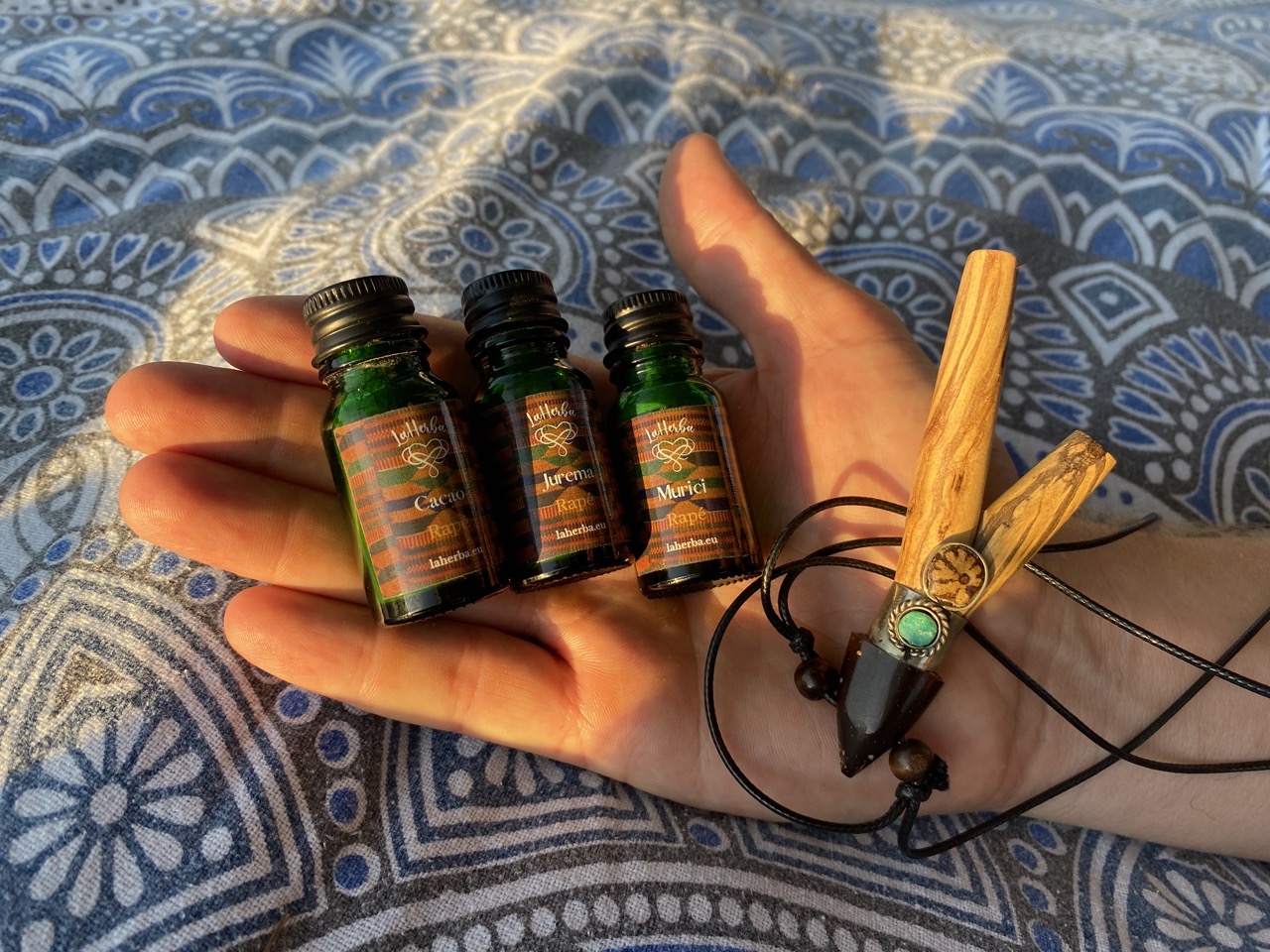
Storing Rapé
It is best to store Rapé in the airtight containers in which they are delivered or to have special glass or stone jars for this purpose, energetically purified, possibly fumigated, etc. Protect it from moisture and store it away from direct sunlight. The quality decreases with age, but you can prolong it with proper storage. Rapé is of good quality even after 1-2 years if it is well packed and stored, e.g. underground. Ideally, Rapé should be consumed within 3 months of purchase, when it is strongest and has a distinct aroma.
Correct storage is essential for preserving the quality of rapé. Changes in humidity, temperature, and air exposure can gradually affect the product. For example, in colder or drier climates, rapé may lose its natural moisture, becoming dry and unpleasant to use. Conversely, in regions with high seasonal humidity or poor storage conditions, it can clump together or develop mold if not handled properly. To maintain its integrity, it’s important to use airtight containers, keep rapé in a cool, dark location, and regulate humidity levels. This not only safeguards its aroma, strength, and texture but also honors its sacred purpose, ensuring you can fully benefit from it every time you use it.
Tips to Preserve Snuff Quality
To ensure your Rapé stays fresh and potent for as long as possible, especially in humid climates:
- Airtight Containers: Use containers with tight seals, such as screw-cap tins or vacuum-sealed jars, to minimize air exposure.
- Cool, Dark Storage: Store rapé in a cool, shaded area away from direct sunlight and heat sources. In tropical environments, consider using a climate-controlled storage space.
- Avoid Frequent Opening: Minimize the time the container is open to prevent exposure to fluctuating humidity and air.
If you are interested in something specific, do not hesitate to contact us by phone or email. Many beautiful moments with this sacred medicine <3
Haux! Haux!
This product is an insence and not ment for ingestion. We don't claim that this product has any healing properties. This natural product is offered for its ethnographic and historical value and is supplied without express or implied fitness for a particular purpose. All information provided is for educational, scientific, ethnographic and historical research purposes only. All products are sold as botanical samples only with no express or implied claims for a specific purpose or use. The use and use of this product is at the discretion, responsibility and risk of the customer.
Discover Your Life Path Number and Glimpse into Your Destiny
The essence of your life can be understood by calculating a single number – your Life Path Number. This number is linked with other numerological cycles of your life and everything that should be c...
Kambo frog vaccine medicine
Kambô, also known as the “frog vaccine,” is the cutaneous secretion of the frog Philomedusa bicolor, native to the Amazon rainforest. Originally, the use of kambô is associated with the native conc...
Hapé sacred medicine, shamanic snuff
Hapé or Rapé (Hapeh, Rapeh, Hapey) is legal and sacred shamanic medicine from the Amazon, pronounced "ha-peh" in English, is a fine powder prepared from Mapacho and a mixture of herbs, seeds, and a...
Mushrooms in a petri bowl shows it amazing mycelium
If you cultivate a mushroom in a petri bowl on agar, its actual “shape” becomes visible. The essential part of a mushroom, the Mycel, is usually hidden from our eye. What we perceive as a “mushroom...


